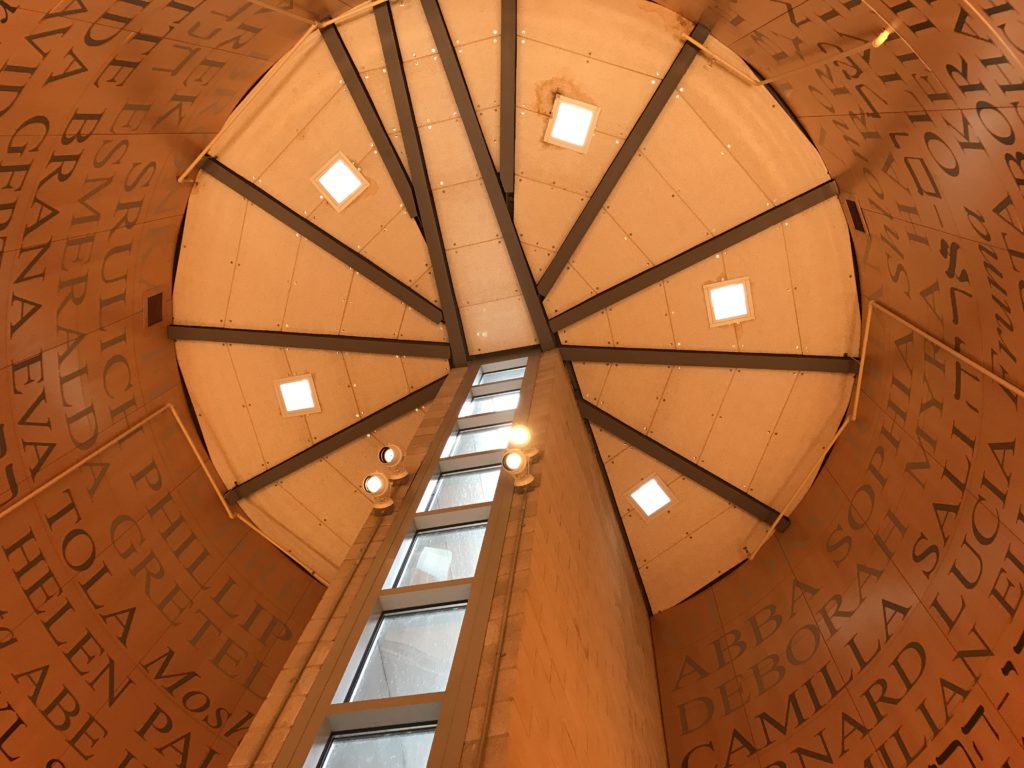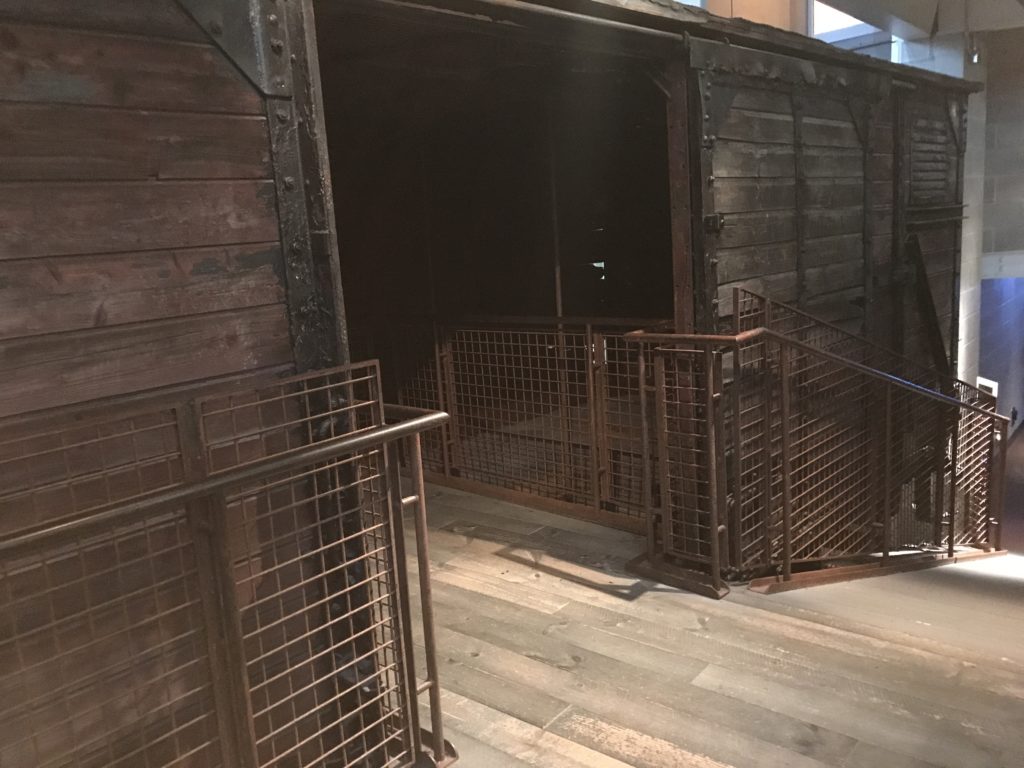This year, the Illinois Holocaust Museum and Education Center is celebrating its 10th anniversary. Even though it is only one of the nearly two dozen Holocaust museums in the United States, it has the distinction of being the third largest in the world.
Chicago-area Holocaust survivors were motivated to form the Holocaust Memorial Foundation of Illinois (HMFI), after neo-Nazis threatened to march in Skokie, a Chicago suburb, in the late 1970s. At that time, the community had one of the largest Holocaust survivor populations outside of Israel. As a recent college graduate living in the Chicago area at that time, I remember how the Jews rallied together.
Initially, the HMFI’s emphasis was on educating the public. The organization worked out of a small storefront in Skokie. This was a time when Shoah survivors were starting to break their decades of silence. The foundation’s efforts resulted in state legislators passing the Holocaust and Genocide Education Mandate in 1990, making Illinois the first state to require Holocaust education in public schools.
The HMFI then focused its efforts on planning and fundraising for the building of the 65,000-square-foot Illinois Holocaust Museum and Education Center, which was designed by renowned architect Stanley Tigerman.
READ: MULTI-MILLION DOLLAR HOLOCAUST MUSEUM OPENS IN MACEDONIA
During our last trip to visit family in suburban Chicago, we spent several hours touring this remarkable museum. In a downpour, we bolted from our rental car, past the Fountain of the Righteous, to the front door. Before our tour of the Zev and Shifra Karkomi Holocaust Exhibition began, our docent described the overall theme of the building:
The entryway was created with dark walls and sharp angles, to represent the intense fears of the Holocaust, whereas the lighter part of the museum has softer edges and natural light, to symbolize the rescue of the survivors. She suggested that we spend a few moments in the Room of Remembrance, a circular room with six skylights, representing the six million Jews who perished during the Holocaust. Names written on the walls in English, Hebrew and Yiddish commemorate a fraction of those people.

Visitors can easily spend several hours looking at artifacts and photos, reading documents and display signs, and watching short videos in the exhibition. Due to time constraints, we chose to listen to the docent for a short while and then walk independently through the remaining corridors. While I have yet to visit a concentration camp, I was significantly impacted by our time standing in a designated area inside a German boxcar that was once used to transport Jews to their deaths.
The Take a Stand: Abe and Ida Cooper Survivor Stories Experience starts at designated times each day. In a small theatre, we watched a holographic survivor discuss parts of his Shoah experience. A moderator fielded questions from the audience and the technology provided the survivor’s realistic answers. Sometimes, the moderator had to slightly reword the questions, so that the holographic survivor could respond. We were later told that each participating survivor answered thousands of questions about their lives. Knowing that the population of Holocaust survivors is rapidly decreasing, this technologically enhanced experience will help keep the survivors’ memories alive.

We quickly perused the Make a Difference exhibit. This section of the museum is filled with hands-on activities geared toward children aged eight to 12. The primary emphasis is to bring awareness to individual differences and the importance of making unbiased decisions. Great care was taken in creating an interactive space for this age group.
Since I was a child during America’s civil rights movement, my memories of the 1960s are vague. I was intrigued by Chicago-based photographer Steve Schapiro’s 46 oversized images that recap essential events from the 1963 March on Washington for Jobs and Freedom, to Robert Kennedy’s 1968 presidential campaign. It brought back to life some of the key figures that made a difference during those turbulent years. Activists and Icons: The Photographs of Steve Schapiro will be on display until Oct. 27.
In the Pritzker Hall of Reflection, we participated in the virtual reality experience called The Last Goodbye. Using a specially designed headset in an enclosed space, we took turns walking side-by-side with Pinchas Gutter, a Toronto resident, when he was filmed returning to the Majdanek death camp. A long cord allowed me to walk closer to three-dimensional projected images, as I listened to Gutter’s chilling words about what it was like to return to the place where his parents and twin sister were murdered. Tears were welling in my eyes when I removed the headset. I have never participated in a museum exhibit that had such a profound effect on me.
While The Last Goodbye is no longer at the museum, it is showing at the Museum of Jewish Heritage in New York and the Los Angeles Museum of the Holocaust until the end of June.
Current and upcoming special exhibits at the Illinois Holocaust Museum and Education Center include Purchased Lives: The American Slave Trade from 1808 to 1865 (Feb. 10-Aug. 25, 2019) and Memory Unearthed: The Lodz Ghetto Photographs of Heryk Ross (Sept. 22, 2019-Jan. 12, 2020).
Hours after we entered the museum, we exited the building. A few rays of sun were attempting to pierce the thick layer of clouds in the sky. Walking back to our car, we paused to reflect on the Righteous Among the Nations fountain. Just like the heartbreaking stories of the survivors, these courageous people should not be forgotten. Holocaust museum visits help maintain an awareness of some of the world’s darkest hours.
